In the ever-evolving landscape of the dog business industry, a new report reveals promising growth in the global veterinary dermatology drugs market.
With new product launches and a robust research and development (R&D) pipeline, the global market is expected to surge, reaching an impressive $28.69 billion by 2030 – and demonstrating a compound annual growth rate (CAGR) of 8.89% between 2023 and 2030.
Dermatology Drugs Market Growth
There are several factors driving the expansion of the veterinary dermatology drugs market:
- Increasing Pet Expenditure: As pet owners increasingly view their furry companions as part of the family, the spending on their well-being has surged, creating a substantial market boost.
- Humanisation of Pets: The humanization of pets has resulted in a higher demand for advanced healthcare, including dermatological solutions, fuelling further market growth.
- Robust R&D Pipeline: Ongoing research and development efforts have led to the creation of more effective and user-friendly drug formulations, making treatment easier for pets and enhancing medication compliance.
- New Product Launches: Key companies are introducing innovative products. For example, Zoetis received FDA clearance for Apoquel Chewable in June 2023, the first chewable pharmaceutical for controlling allergic itch and inflammation in dogs.
- Prevalence of Dermatologic Conditions: The increasing prevalence of dermatologic conditions among pets is a substantial factor driving market growth.
- Key Companies’ Initiative: Market leaders are taking proactive steps to improve their product portfolios and contribute to market growth.
Market Highlights
Research shows that the parasitic infections segment dominated the market in 2022, holding more than 40.0% of the revenue share, thanks to strategic initiatives by key companies. For example, Virbac expanded its medicinal product line by acquiring early-stage parasiticides from Elanco in March 2021.
In 2022, the prescription segment dominated the market; now, projections see the over-the-counter (OTC) segment growing at the fastest CAGR of about 9.1% from 2023 to 2030. Allergic infections should witness the fastest CAGR of over 9.2% during the forecast period. Companion animals took the lead in the market in 2022 due to the rise in pet ownership, increased public awareness, and the demand for high-quality animal care.








